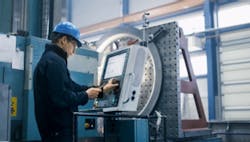Maximizing the contributions of people in your plant
As end-to-end automation progresses, technology continues to upend the boundaries between man and machine. Artificial intelligence, combined with endless cloud-computing resources, means more machine involvement. However, people will always be involved in process-manufacturing plants. And this is a good thing.
Best practices are to create an environment where the natural attributes of people and technology are balanced to assure optimal communication, safety and production. The focus should not be simply on replacing people with machines, but rather on the positive attributes of both people and machines as well as their productive and symbiotic relationships. This article will cover the new roles and technology that support critical human factors and machine collaboration.
Highlighting the human factor
Many organizations have simply invested in data storage without considering how it will be accessed, understood and used in practice. Human memory works differently than machine memory. While machines are very good at capturing and storing data, humans are able to remember perceptions, images and feelings. Thus, only people can draw on human attributes to create a better understanding from things that have been experienced or memorized from past experiences.
Machines are reliable only for certain defined situations for which they’ve been programmed, i.e. repeating the same set of actions on a production line. People, however, through their powers of perception, improvisation and detection, among other attributes, are reliable within and outside of the defined operational domain. Technology can only do what we’ve asked it to do, while people are able to create new processes or situations when the unexpected arises.
As the price of storing data has declined and cloud-based systems have emerged, more and more information is available for data mining, but in general, the process-manufacturing industry has not invested the millions of dollars necessary to ensure that the data can be utilized effectively.
Designing for people—invest in human factors
Each operational team in process manufacturing has different goals and interests. They are active on different shifts and reporting up the line to various supervisors who, in turn, may be reporting into the corporate structure. All of these people and teams are using technology in some way to do their jobs.
In a 12-hour shift, how much data is retained or forgotten? On a good day, a high percentage of data generated may be retained. On a stressful shift, it may be only half. Transfer of data to the next team will be directly affected by this, especially when errors and omissions of communication are factored in.
Relying on people to remember all information and to communicate it reliably either verbally or via written documents will always be problematic. Inaccurate communication can result in many different hurdles, including safety issues. This imprecise transfer of information creates a need to provide easy-to-use technology to support people to overcome their natural limitations. However, greater benefits occur if the technology does more, such as to enhance natural human capabilities to transfer information from shift to shift. The incoming shift will gain a better understanding of what is happening and will be able to act more quickly and effectively.
A high-quality digital shift-handover process
Information shared during shift handovers represents a critical foundation for continuity. It serves as a running protocol of relevant events and conditions that, together, describe the state of manufacturing processes within a specific time period. To align all these sources, technology in the form of a digital shift-management solution enables efficient handovers and provides a formal digital record of plant operations that can be delivered accurately and conveniently to all constituents in the manufacturing process.
Embrace technology and support human factors
Technology won’t replace people. Our aim should be to use technology to enable people to use their natural capabilities and increase their performance. Successful manufacturing enterprises will embrace an approach that elevates the attributes of both people and technology to help the human-machine network work together in a more collaborative way. This will ensure more transparency, reliability and visibility across all plant functions to help teams better communicate and optimize outcomes.
By Andreas Eschbach CEO, eschbach and Dr. Andy Brazier, risk consultant and owner at AB Risk Limited
